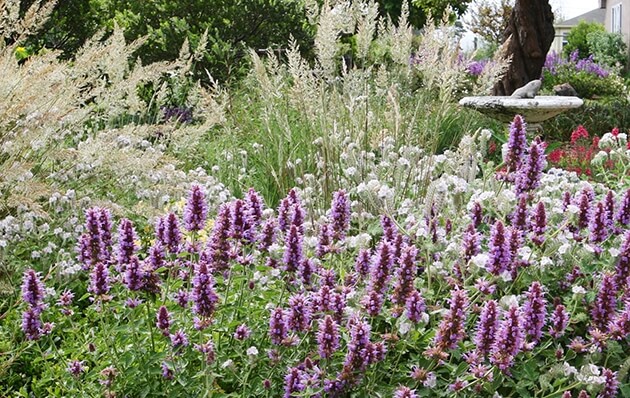No Results Found
The page you requested could not be found. Try refining your search, or use the navigation above to locate the post.

Photo: Suzi Katz
There’s a new paradigm in the gardening world that is steadily gaining momentum, and it’s all about viewing the garden as a living ecosystem rather than manicured outdoor decoration placed there solely with human needs in mind.
Dedicated gardeners love their plants; for some this has been a life-long passion, with very emotional connections to certain plants or garden styles that evoke wonderful memories. We often have favorite plants, ones that fill a specific need or satisfy an artistic aesthetic, coupled with a wish to create and maintain beauty around our homes. This does not have to be sacrificed to become a habitat gardener.
Gardeners who have an affinity with nature strive to learn ways to create a garden that satisfies their personal needs and wants as well as having a positive affect on the natural communities within which we all live. By tuning in to the out-of-doors surrounding their homes, and making careful, thoughtful selections of the plants that are included in their garden designs, they create gardens that truly reflect a sense of place. These gardens become habitats that bridge the gap between the worlds of formal gardening and a wild ecosystem, bringing the beauty and joy of nature close to home.
Our native plants have had millennia to adapt to our local climate and soils, co-evolving with insects, fungi, and microbes to form complex networks that create the foundation of our natural communities. Habitat gardens are designed to provide their custodians with beauty, delight, peaceful vistas, and places to gather with family and friends, while also providing resources for other creatures: food, cover, water, nesting opportunities, or simply a place to rest. Habitat gardens don’t focus solely on our needs.
Habitat gardeners embrace biological diversity, ecological design, and environmentally-friendly gardening methods, and their efforts pay off by helping to re-establish habitat corridors between open spaces for wildlife. Many open space lands close to urban areas are already in decline and stressed by human encroachment, and urban areas are often dominated by gardens that are nothing more than “green deserts”—land given over to plants (such as lawn grasses and sheared hedges) that need a lot of inputs but provide no resources at all for native creatures, esp. pollinators.
Habitat gardens become havens, with enhanced resources in each season for both resident and migratory populations of wildlife. From personal experience, I can say that there is nothing quite as thrilling for a naturalist as being able to quietly observe whole life cycles up close on a daily, seasonal, and yearly basis.
The page you requested could not be found. Try refining your search, or use the navigation above to locate the post.